Optic Nerve Crush
Glaucoma is a group of neurodegenerative optic neuropathies caused by retinal ganglion cell (RGC) death and optic nerve deterioration. Without – and often despite – current therapeutic intervention, glaucoma ultimately results in progressive and irreversible vision loss. The initial insult in glaucoma pathogenesis is believed to occur at the lamina cribrosa, a collagenous structure where RGC axons exit the eye and coalesce to form the optic nerve1. Optic nerve crush (ONC) delivers an acute, mechanical injury to the nerve at this location. Rodent models of ONC have been widely utilized to examine glaucomatous disease pathophysiology as well as to advance the development of novel therapeutics.
ONC is performed on anesthetized mice by exposing the optic nerve through the bulbar conjunctiva and transiently pinching the nerve just behind the globe using self-closing forceps2. Genes within the mitogen-activated protein kinase (MAPK) pathway such as pJNK and pJUN are upregulated following ONC, triggering intrinsic BAX-dependent apoptotic RGC death by three days post ONC3,4.
Multiple endpoints are available to determine the level of neuroprotection following test agent administration:
- Quantification of caspase3 activation in all RGCs on retinal flat mounts.
- Quantification of RGC viability as assessed by somal expression of RPBMS on retinal flatmounts.
- TUJ1 labeling to assess the density and integrity of RGC axons proximal to the crush site on retinal flatmounts.
- OCT quantification of retinal layers containing RGC complex (retinal nerve fiber layer, ganglion cell layer, and inner plexiform layer).
- Histological analysis of the optic nerve.
- CTB tracer to follow optic nerve regeneration.
- Pattern ERG analyses of RGC function.
- Visual acuity assessment using optokinetic tracking.

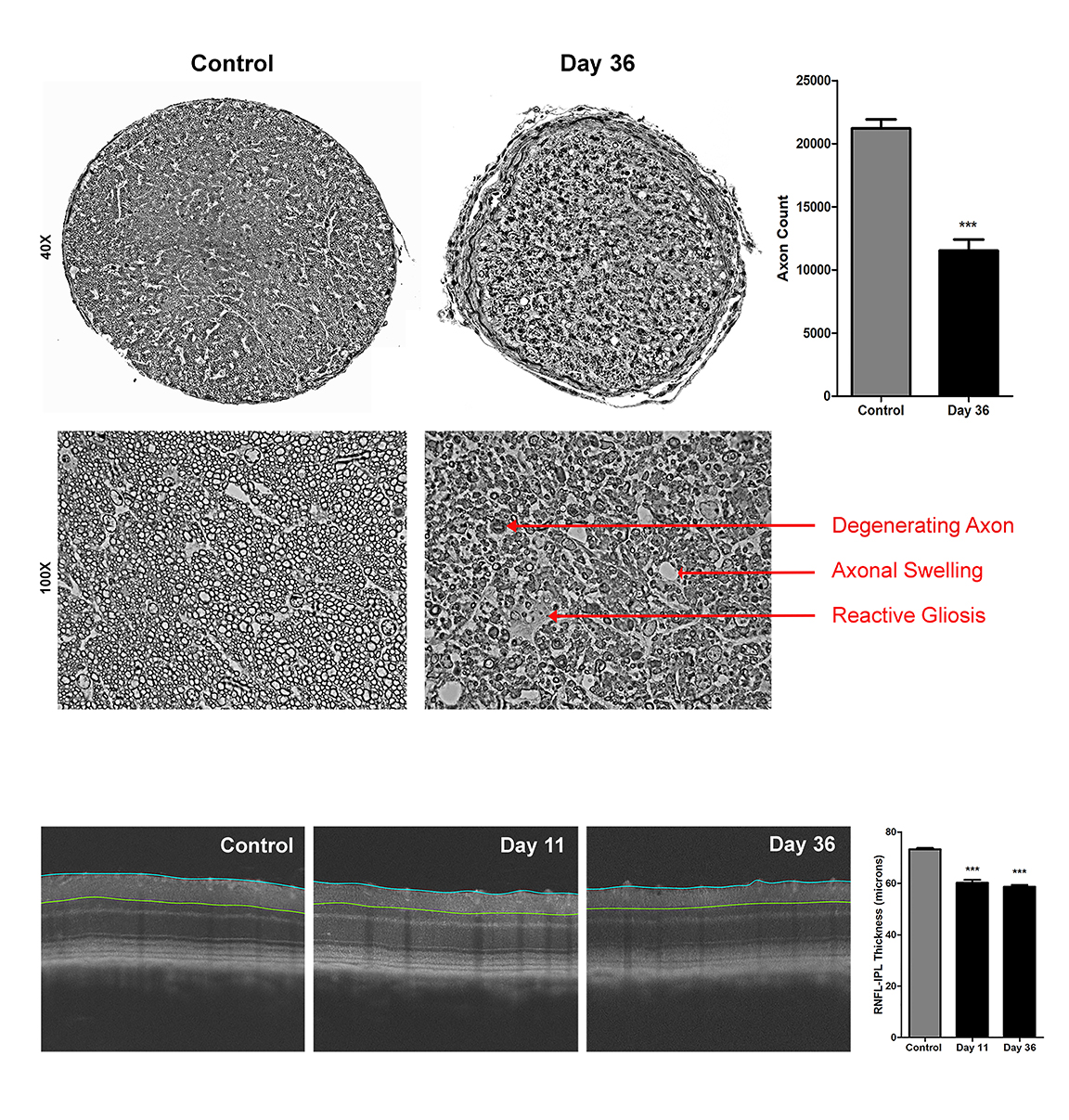
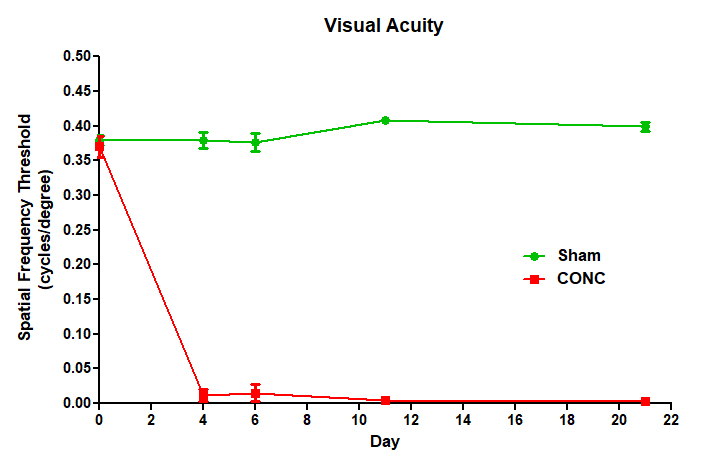

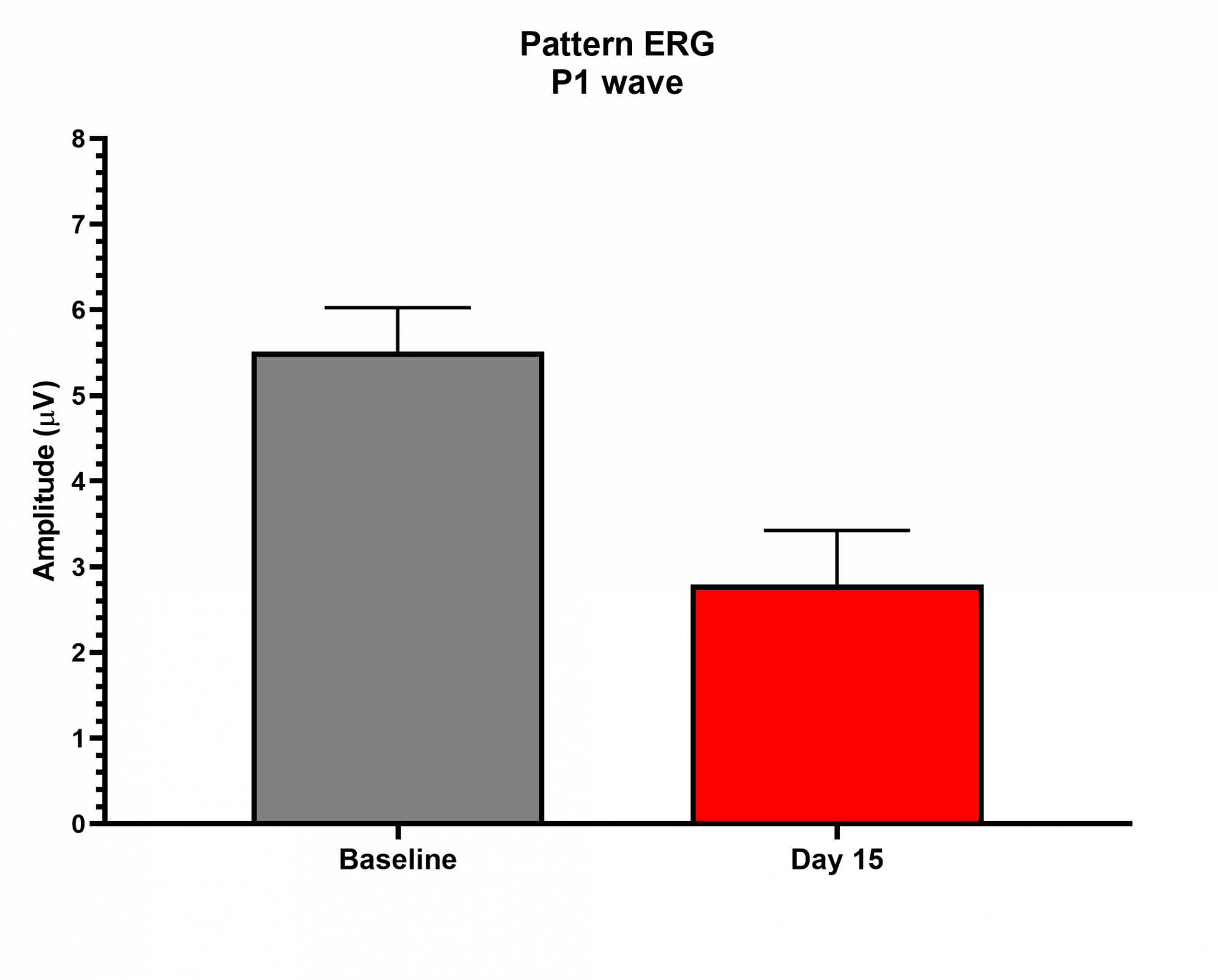
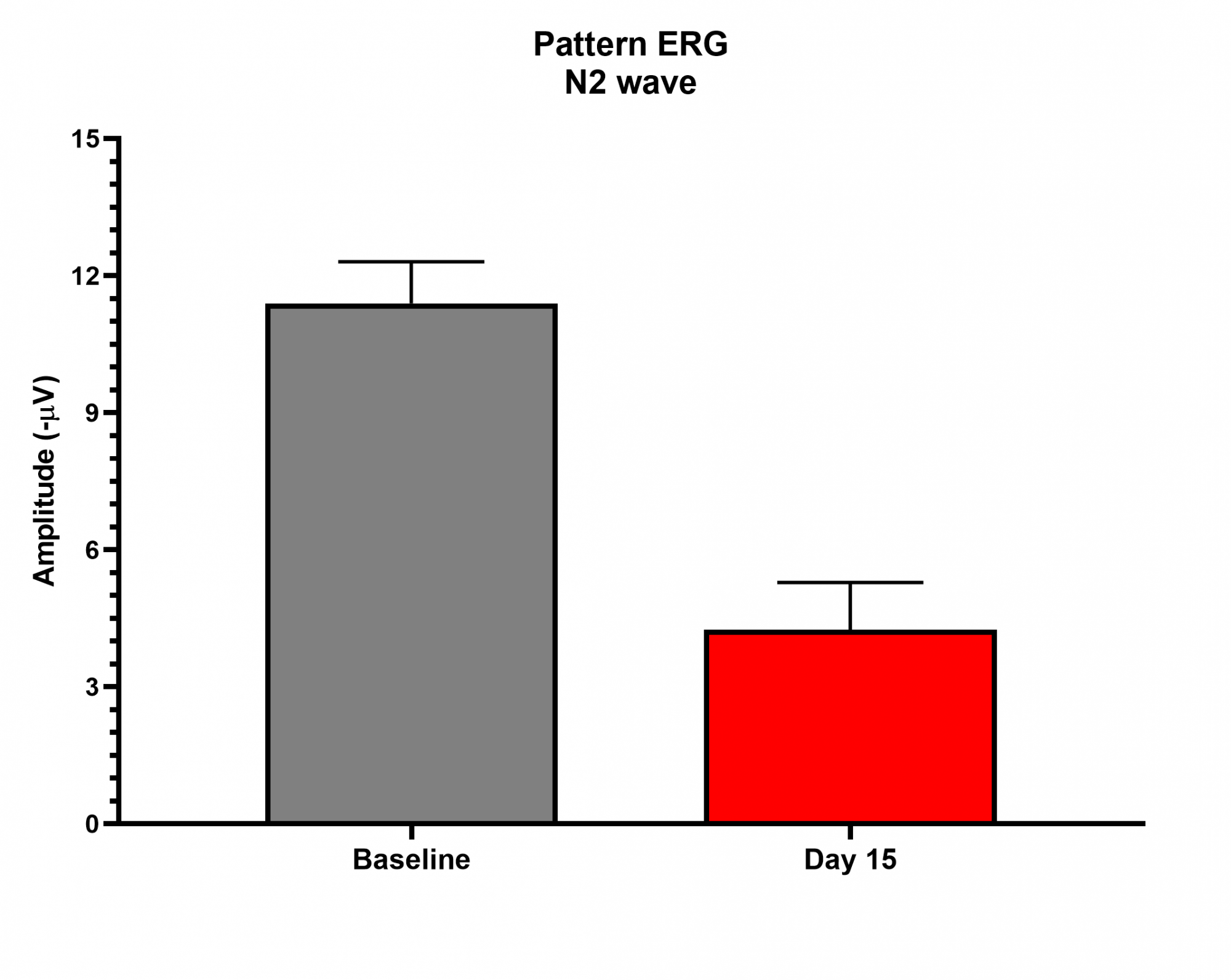
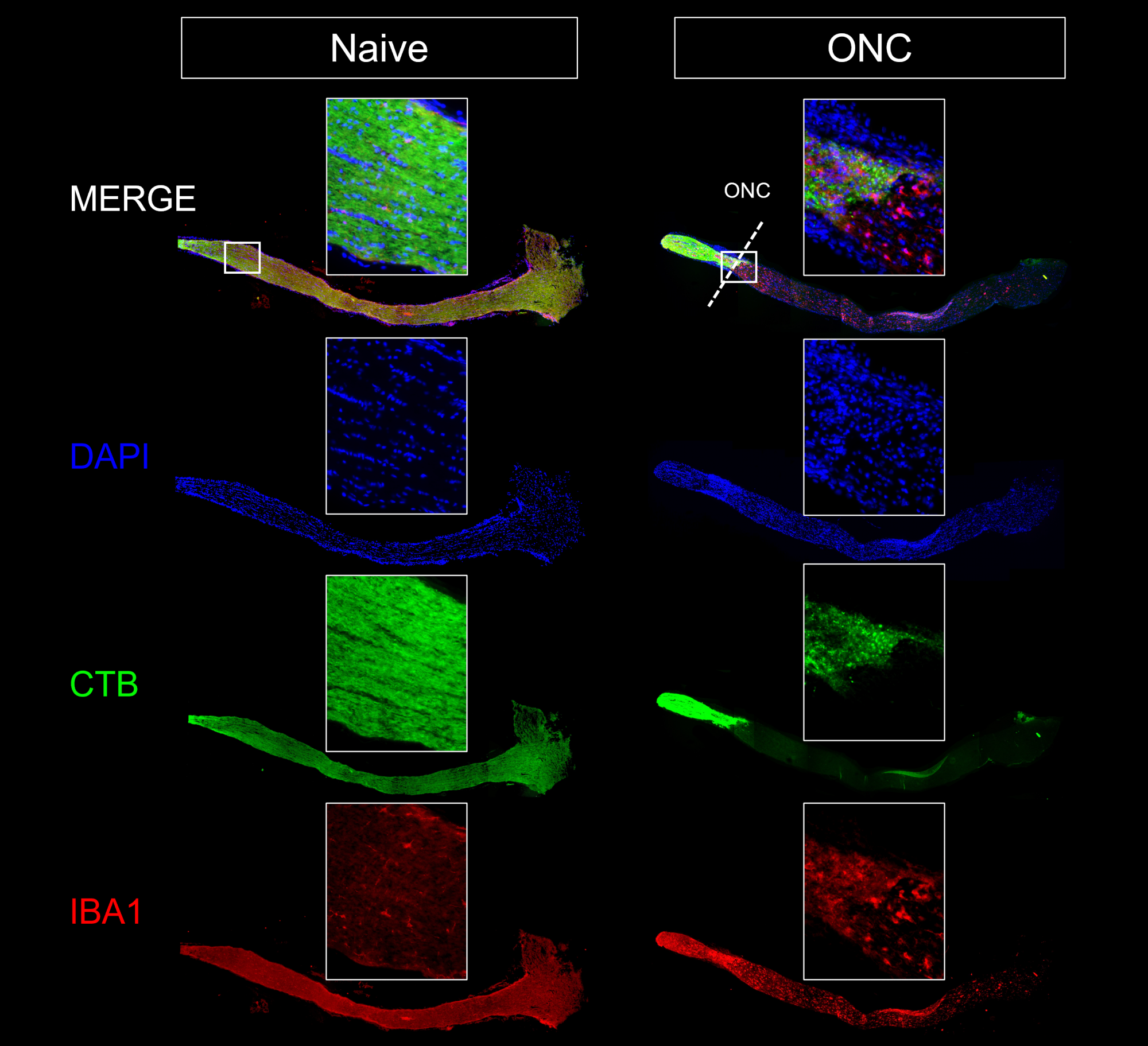
1. Quigley, H. A., Hohman, R. M., Addicks, E. M., Massof, R. W. & Green, W. R. Morphologic Changes in the Lamina Cribrosa Correlated with Neural Loss in Open-Angle Glaucoma. Am. J. Ophthalmol. 95, 673–691 (1983).
2. Li, Yan; Schlamp, Cassandra; Nickells, R. Experimental induction of retinal ganglion cell death in adult mice. 40, 13329–13333 (1999).
3. Fernandes, K. A. et al. JNK2 and JNK3 are major regulators of axonal injury-induced retinal ganglion cell death. Neurobiol. Dis. (2012). doi:10.1016/j.nbd.2012.02.003
4. Mac Nair, C. E., Schlamp, C. L., Montgomery, A. D., Shestopalov, V. I. & Nickells, R. W. Retinal glial responses to optic nerve crush are attenuated in Bax-deficient mice and modulated by purinergic signaling pathways. J. Neuroinflammation 13, 1–18 (2016).
